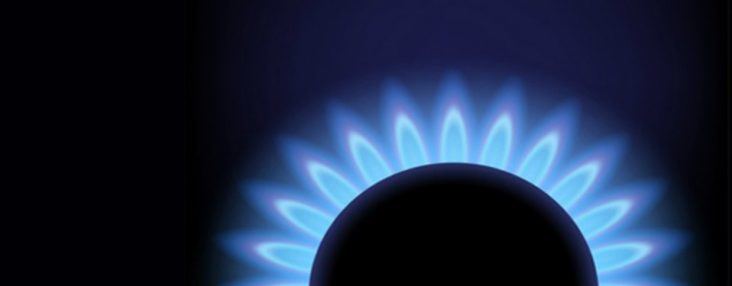Natural gas to fuel most of U.S. power generation in 2016, first time to eclipse coal
by March 9, 2016 9:17 am 263 views

U.S. Department of Energy officials said Tuesday (March 9) that natural gas is expected to fuel the largest share of electricity generation in 2016 just as future prices for the cheap hydrocarbon slides to a 17-year low. By year’s end, energy officials say, natural gas for power use will rise to 33%, compared with 32% for coal.
If the 2016 forecast comes true, this would be the first time natural gas provides more electricity generation than coal on an annual average basis, according to U.S. Energy Information Administration’s (EIA) short-term energy outlook report for March.
In 2017, natural gas and coal are both forecasted to fuel 32% of electricity generation. For renewables, the forecast share of total electricity generation supplied by hydropower rises from 6% in 2016 to 7% in 2017, and the forecast share for other renewables increases from 8% in 2016 to 9% in 2017, the EIA said.
Low natural gas prices have been the primary driver of increasing natural gas use for power generation, the EIA said, although reductions in coal capacity and the availability of efficient gas-fired generating units have also played a role.
On an annual average basis, the electric power sector is the largest consumer of natural gas, using more than the industrial sector and each of the buildings sectors (residential and commercial). Although consumption of natural gas in the power sector peaks during the summer – when electricity demand is highest – the power sector’s natural gas consumption during the winter has been increasing as more generation switches to gas and more households rely on electricity as a main heating source.
Tuesday’s forecast by U.S. energy officials comes after natural gas use by the power industry eclipsed coal for the first time-ever in April 2015, and then again in July. That trend continued in the fourth quarter of 2015 as natural gas-fired generation has risen in every region while coal for power use has declined, EIA data shows.
At the same time, cheap natural gas also hastened the dramatic decline of capital spending and production in the oil and gas sector in the second half of 2015 and early 2016 as future prices are trading near 17-year lows. The EIA forecasts that Henry Hub spot prices will average $2.25 per million British thermal units (MMBtu) in 2016 and $3.02 per MMBtu in 2017, compared with an average of $2.63 per MMBtu in 2015.
On Feb. 26, U.S. natural gas prices were 2.536 billion cubic feet (Bcf), 46% higher than during the same week last year and 36% higher than the previous five-year average (2011-15) for that same week. EIA forecasts that U.S. stockpiles will end the winter heating season (March 31) at 2.288 Bcf, which would be 54% above the level at the same time last year.
Following are additional highlights of this month’s short-term U.S. energy outlook.
• West Texas Intermediate (WTI) and international Brent crude oil prices are forecasted to average $34 per barrel in 2016 and $40 per barrel in 2017, about $3- and $10 per barrel more than last’s month’s forecast. The lower forecast prices reflect oil production that has been more resilient than expected in a low-price environment and lower expectations for forecast oil demand growth, EIA said.
• U.S. crude oil production averaged an estimated 9.4 million barrels per day (b/d) in 2015, and it is forecast to average 8.7 million b/d in 2016 and 8.2 million per day in 2017. EIA estimates that crude oil production in February averaged 9.1 million per day, which was 80,000 per day below the January level.
• Total motor gasoline consumption increased by an estimated 240,000 b/d, (2.7%) in 2015 to an average of 9.2 million b/d, the highest level since the record 9.3 million b/d in 2007. Although total nonfarm employment and total highway travel have increased by 2.9% and 3.7%, respectively, since 2007, improving vehicle fuel economy continues to hold gasoline consumption in check throughout the forecast period.
• Gasoline consumption is forecast to increase by only 90,000 per day (1.0%) in 2016, as a forecast 2.1% increase in highway travel because of employment growth and low retail prices is partially offset by continuing increases in vehicle fleet fuel economy. In 2015, jet fuel consumption increased by an estimated 70,000 b/d, or 4.7%. The 2016 forecast for jet fuel consumption is mostly unchanged through the forecast period, with improvements in average airline fleet fuel economy offsetting growth in freight and passenger travel.
• Declining wholesale gasoline margins contributed to U.S. regular gasoline retail prices averaging $1.76 per gallon in February, down from an average of $1.95 per gallon in January. EIA projects regular gasoline retail prices to average $1.85 per gallon in the first quarter of 2016, before reaching an average of $2.02 per gallon in June, at the start of the summer driving season. The U.S. regular gasoline retail price, which averaged $2.43 per gallon in 2015, is projected to average $1.89 per gallon in 2016, eight cents a gallon lower than in last month’s outlook This would be the lowest annual average since 2004.
